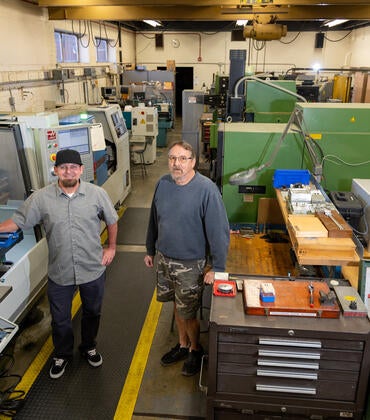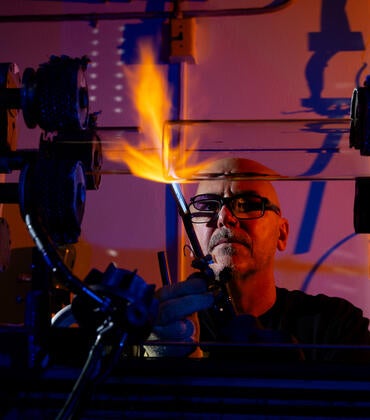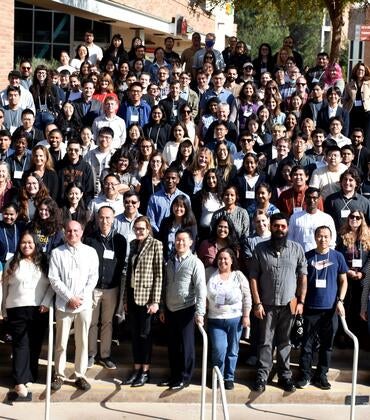Protons and neutrons are composed of fundamental particles called quarks. Quarks come in six different types or flavors. The proton is made up of two up quarks and one down quark; a neutron is made up of one up quark and two down quarks. Of the six, the bottom and top quarks are the most massive.
For the first time at a hadron collider – the Large Hadron Collider, or LHC, at CERN in Switzerland – the Compact Muon Solenoid Experiment, or CMS, of which UC Riverside was a founding member, has performed a precise measurement of the way in which a bottom quark decays to produce a jet. The ability to accurately model these jets is an essential requirement for many of the precision studies and searches for new physics currently being performed at the LHC.
Stephen Wimpenny, a professor of physics and astronomy at UCR, and Brent Yates, his former graduate student, performed the analysis. More information about the analysis can be found here.
“The knowledge of bottom quark fragmentation is one of the important uncertainties in the study of the top quark and the study of the Higgs decay into a pair of bottom quarks,” Wimpenny said. “Further, the new CMS result will also impact many searches for new physics processes which can have multiple bottom quarks in their decay chains. By significantly improving the knowledge of how a bottom quark fragments, this measurement will make a huge number of LHC studies more precise, now and in the future.”
Yates is currently a postdoctoral researcher at Ohio State University, where he continues to work on this project under Wimpenny’s supervision.
Thumbnail photo from Wikimedia Commons.





